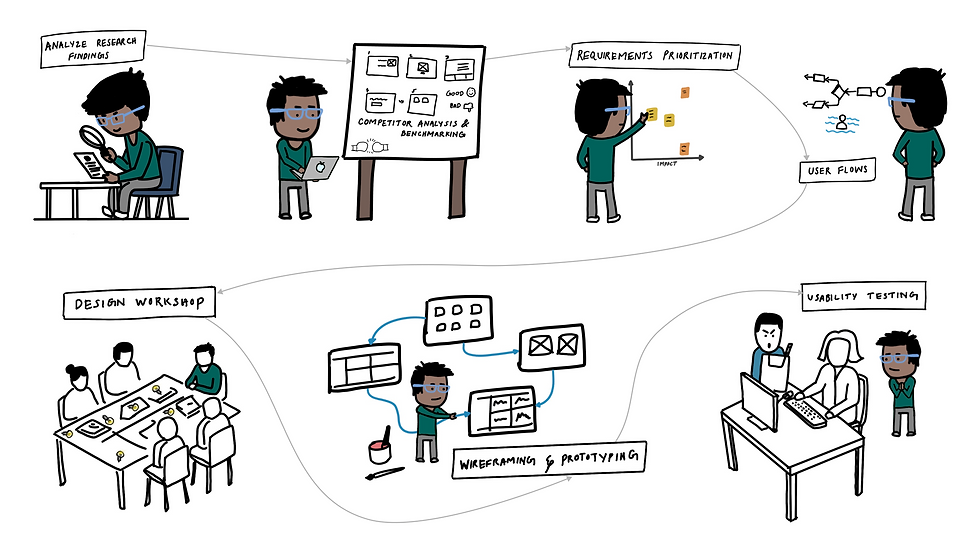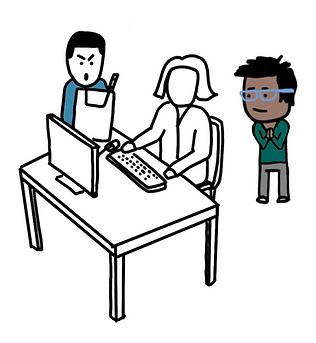Wireless Channel Designer
Enabling Engineers to Model and Analyze Complex Wireless Channels Efficiently

OVERVIEW
Wireless engineers and researchers require accurate tools to model and analyze wireless channels for technologies like 5G, lte, and satellite communications. However, existing solutions lack flexibility, usability, or precision, making the modeling process time-consuming and inefficient.
My goal was to design an intuitive, efficient, and powerful wireless channel modeler application to simplify complex modeling tasks.
ROLE & DURATION
User Experience Designer
-
Organize and lead cross-functional design sprints.
-
Collect expert insights and create MVP designs.
-
Develop high-fidelity prototypes for usability testing.
-
Set a long term vision for the application.
-
Create custom scientific icons.
7 weeks within a 6-month release cycle.
To comply with my non-disclosure agreement, I have omitted and obfuscated confidential information in this presentation.
Information in this case study does not necessarily reflect the views of MathWorks. Get in touch to learn more!
The Problem
Wireless systems engineers need accurate and efficient tools to model and compare wireless channel behaviors across different environments. Existing solutions lack flexibility and precision, making it difficult to simulate complex channel conditions. Engineers require a streamlined way to evaluate and customize channel models while maintaining control over key parameters and ensuring compliance with industry standards. A no-code solution is needed to simplify modeling, enhance decision-making, and balance accuracy with performance.

The Outcome and Key features
The desktop app enables professionals to model diverse signal propagation environments like urban, rural, indoor, and beyond - across technologies like 5G, WLAN, and satellite communications.

Optimized UI for Complex Configurations
The layout balances flexibility and clarity, preventing clutter while supporting a wide set of parameters. Collapsible sections and categorized inputs ensure ease of use.

Balance Between UI Simplicity & Expert Control
The app provides default presets while allowing deep customization. Users can generate quick visualizations, tweak detailed settings, and export to MATLAB for further modifications.

Multi-Model Comparison
Engineers can compare multiple wireless channel models side by side. The app provides detailed visual insights to aid in decision-making

Process
I spent two weeks learning the basics of wireless channels using input from colleagues, MATLAB documentation, and external resources. This gave me a foundational understanding of the problem and how the application fits into our product range.
Next, the following steps were done:
The workshop and process followed is a tailored adaptation of design thinking, customized to fit our team and align with our design language at MathWorks.
.png)
Research
We conducted interviews and surveys with wireless engineers, network researchers, and system designers to understand their pain points. My UX researcher lead these activities as I observed.
Key Findings:
-
Users are deeply familiar with coding and prefer hands-on control over their models, but they acknowledge that it is a time-consuming process
-
70% reported that managing multiple simulations was a bottleneck in their workflow.
-
Interoperability with MATLAB and Python was crucial for advanced users.
-
Selecting the right channel model template is complex, requiring better guidance or recommendations within the tool.
-
Engineers need quick feedback through visualizations to understand signal behaviors efficiently.
-
There is a need for both simplicity and depth—users want an intuitive UI but also expect control over advanced parameters.
Competitive Analysis:
We analyzed existing tools (MATLAB command line features, Keysight Channel Studio and NS-3) and found the following gaps:
-
Steep learning curve for non-expert users.
-
Manual script-heavy processes that slowed down workflow.
-
Limited visualization options for model analysis.
Pain Points
-
Time-consuming and inefficient workflow – Engineers spend excessive time manually coding, debugging, and managing complex parameters for different channel models, slowing down the design process.
-
Lack of balance between UI and control – While UI-based tools improve accessibility, engineers feel they lose control over model customization, making it difficult to strike a balance between ease of use and flexibility.
-
Limited visualization and model comparison – Existing tools lack intuitive, real-time visualizations and require extensive manual effort to compare different channel models, making decision-making slower.
-
Integration and scalability challenges – Exporting data to tools like MATLAB is cumbersome, and many existing solutions struggle to scale efficiently for emerging wireless technologies like 5G and mmWave.
User Workflow Mapping
To align the team before the design phase, I worked with our UX researcher, developers, and team lead to map out a clear workflow for the app. We structured it in three levels:
-
Stages (green): High-level phases like Configuration, Analysis, and Export
-
Tasks (blue): Key actions within each stage
-
Steps/User Flow (yellow): Detailed user interactions and flow
This visual workflow helped ensure everyone had a shared understanding going into the design workshop, where we would collaboratively sketch interface ideas.

Design Workshop
To kickstart the collaborative ideation process, I organized a cross-functional Design Workshop involving key stakeholders. The goal was to align on user needs, brainstorm solutions, and strategically phase feature development.
Workshop Structure:
-
Duration: 6 hours spread over 2 days
-
Participants:
-
Product Leads
-
Researchers
-
Software Developers
-
Technical Writer
-
Quality Assurance Engineer
-
Customer-Facing Team Members
-

During the sessions, we outlined ideas for future release versions, prioritizing critical needs first. This approach not only streamlined the MVP but also reduced design effort for upcoming releases by integrating a clear roadmap for future expansion.
.jpg)
Wireframing
Following the workshop, several ideas were generated, leading to the creation of low-fidelity wireframes for discussions and feature prioritization. Multiple iterations of high-fidelity wireframes were then designed, prototyped, and reviewed with the team.
The prototypes played a key role in defining the MVP design and establishing a phased approach for future updates. Based on team feedback, we decided to exclude the "Informed model selection" feature from the MVP but compensated by enhancing documentation and help pages with more detailed guidance.

Usability Testing
I collaborated with a UX researcher to conduct usability testing with wireless engineers. We began by testing the high-fidelity prototypes with internal engineers to gather initial feedback on the app’s core features and interactions. Once the fundamental workflows were validated, a coded prototype was developed and extended the testing to potential customers to ensure the design met real-world needs. This allowed us to test not only the interface but also the accuracy of results, visualizations, and overall efficiency.
Participants found the interface intuitive and reported a notably reduced learning curve, with most users becoming confident after just one session. The app’s visual approach to channel modeling not only improved engagement but also increased productivity. The following key metrics capture the impact of the app on usability and efficiency.
.png)
SYSTEM USABILITY SCORE (SUS)
85%
Users rated the app's usability as excellent, indicating strong satisfaction and intuitive interaction.
TIME EFFICIENCY
5x Faster
Tasks that typically took 30 minutes with manual coding were completed in under 6 minutes using the app.
TASK SUCCESS RATE
100%
All participants successfully completed channel modeling and simulation tasks without help.
“
“This will easily save me hours every week. I don’t need to write or debug hundreds of lines of code anymore. Everything I need is right here.”
”
Key learnings
PRODUCT DESIGN INSIGHTS
-
Mapping users’ existing mental models from coding into the UI builds trust and gives them a sense of control, especially when flexibility is preserved.
-
Visual feedback, such as graphs and dynamic indicators, was more effective than raw data in boosting user engagement and confidence.
-
Scenario-based presets accelerated onboarding, making it easier for new users to get started without feeling overwhelmed.
-
Grouping parameters into collapsible, logical sections made the UI more intuitive for all users while still supporting the depth and complexity expected by advanced users.
-
Seamless integration with existing tools and workflows was non-negotiable for user adoption.
PROJECT MANAGEMENT & COLLABORATION
-
Balancing user needs, business goals, and technical constraints is especially challenging in complex domains like wireless systems. Collaborative product development, with continuous input from engineering and business stakeholders is key to designing usable and viable solutions.
-
Aligning cross-functional stakeholders across locations and time zones requires strategic design reviews, clear documentation, and proactive planning to maintain shared understanding.
To comply with my non-disclosure agreement, I have omitted and obfuscated confidential information such as specific visuals, detailed workflows, and implementation data. However, I’d be happy to walk through my design process, challenges, decision-making rationale, and the impact of this project in a one-on-one conversation. Get in touch!



